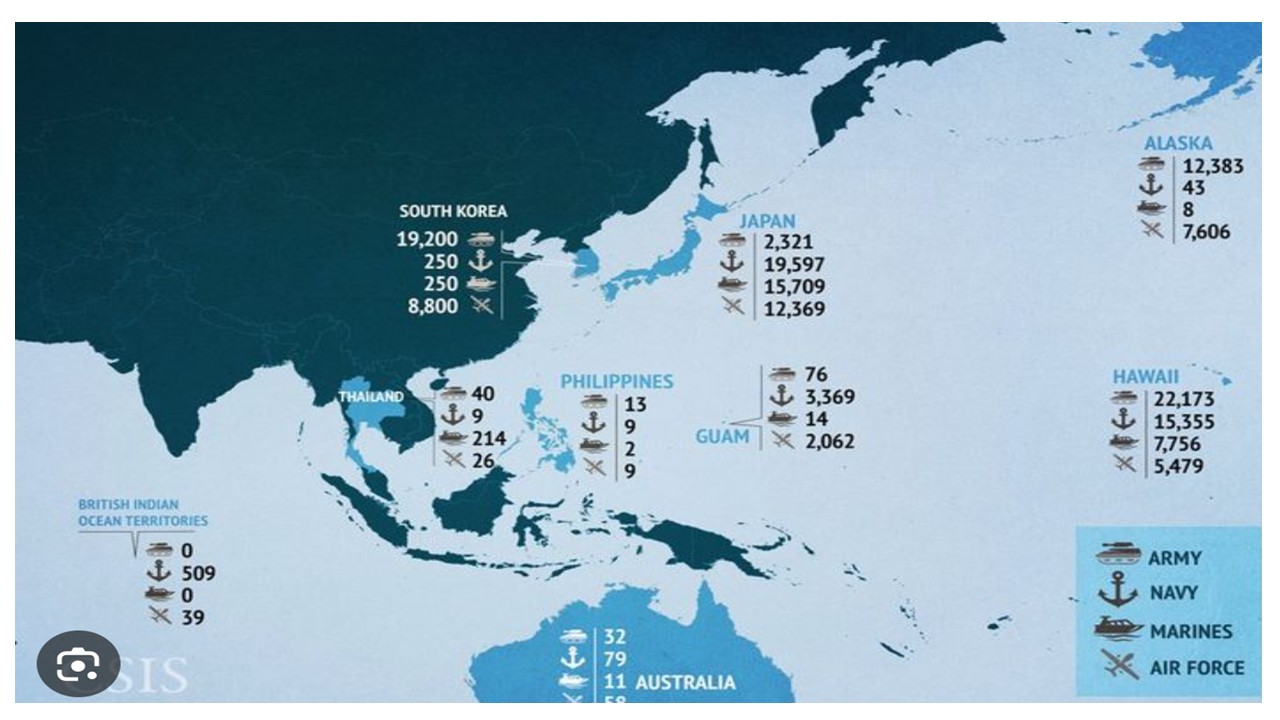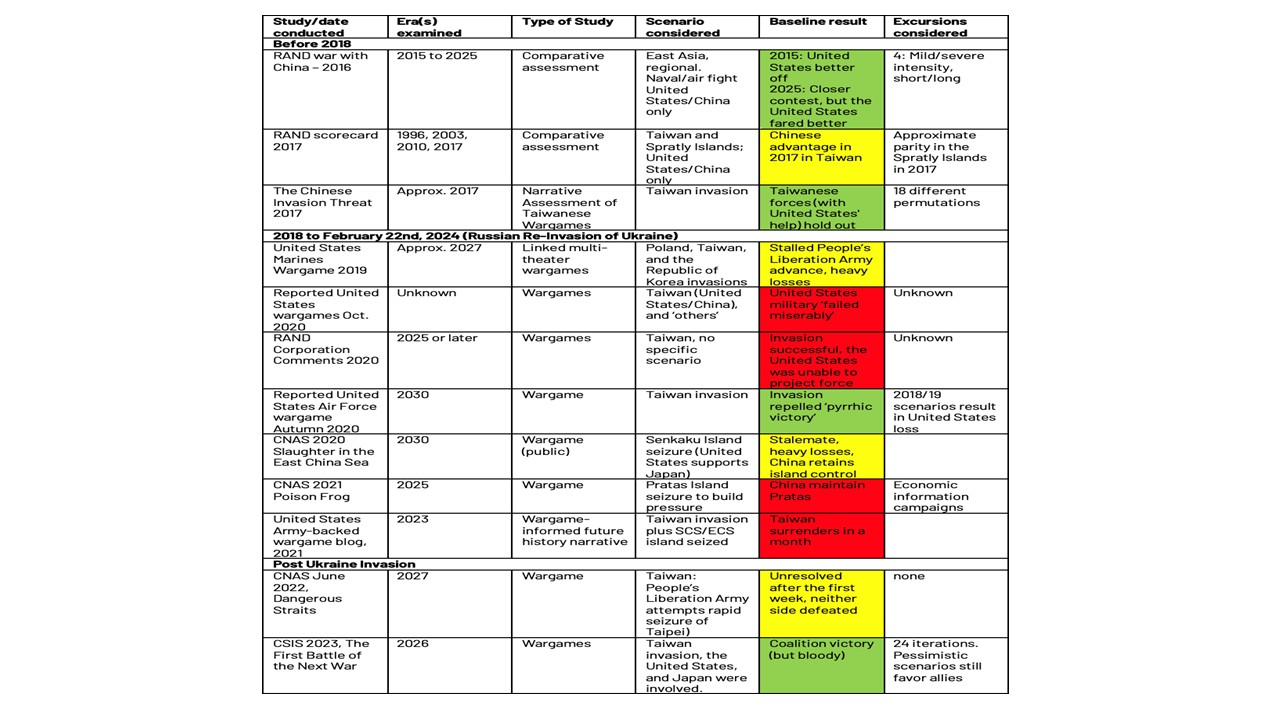U.S. and Asia Defense Partners
· Japan, S Korea and Australia could eventually agree to some extra commitment to increase (self) defence spending in the next 5-10 years though perhaps not targets like NATO countries. This could come as part of the trade deal negotiations currently underway. Japan and S Korea would however be strongly opposed to direct involvement of their forces in the scenario that China invaded Taiwan and then the U.S. got militarily involved. Overall, we attach a 5% probability to China invading Taiwan in 2025 and 2026 rising to 20% in 2027-28.
After the NATO agreement to boost defense spending to 5% by 2035, the Trump administration are keen for allies in Asia to do the same. What are the prospects?
Figure 1: U.S. Military in East Asia

Source: CSIS
The U.S.’s main allies in east Asia are Japan, S Korea, Australia and the Philippines (Figure 1) plus a strategic ambiguity defence policy towards Taiwan. The U.S. would like these allies to follow NATO’s lead and aim for 5% of GDP (3.5% hard military spending and 1.5% infrastructure). This also reflects the Asia pivot in the U.S. defence strategy, given the long-term desire to counter the rise of China in Asia.
China this year has conducted live fire exercises between Australia and New Zealand (here); sailed two aircraft carrier east of Japan (here) and continues expansion plans in the South China sea (here). This regional show of force is one level of concern for the U.S. and allies in the region and Japan, S Korea and Australia could eventually agree to some extra commitment to increase (self) defence spending in the next 5-10 years though perhaps not targets like NATO countries. This could come as part of the trade deal negotiations currently underway, though tensions are currently noticeable between the U.S. and Japan and S Korea on trade and military spending. The U.S. is also demanding more money for U.S. military protection. Japan’s PM Ishiba could also lose the July upper house election, which could cause policy gridlock in the near-term. The Philippines is more fiscally restrained, but would want to maintain its good relationship with the U.S. However, most east Asia allies would prefer that the U.S. provide defence deterrent and the main defence in the eventuality that their countries are attacked. Getting involved outside their countries is still more difficult.
The biggest medium-term defence issue is whether China invades or blockades Taiwan and how the U.S. and its Asia allies respond.
We still maintain the view that China would only invade when its military is strong enough (2027 or after) and President Xi could be assured of success. War game scenarios (Figure 2) shows that any U.S./China direct clashes would involve heavy losses for both sides and neither side could be assured of victory if the U.S. joined a war with China.
President Xi could ask President Donald Trump to promise not to get involved in Taiwan reunification and abandon the strategic ambiguity policy in exchange for a better trade deal later this year. However, Trump has so far understood the importance of strategic ambiguity towards Taiwan, which acts as a deterrent. Trump’s success against Iran may or may not reinforce this deterrent, as a war against China over Taiwan would be much more bloody and politically difficult for Trump. Overall, we attach a 5% probability to China invading Taiwan in 2025 and 2026 rising to 20% in 2027-28. Whether Trump would then come to Taiwan military rescue in the scenario of a China invasion is uncertain, as Trump dislikes long wars and is opportunistic.
Figure 2: Taiwan War Game Scenarios
Source: CIMSEC (here)
Asia allies could be asked by the U.S. for use of U.S. bases and direct involvement in the worst-case scenario of a China invasion of Taiwan.
For Japan this would cause a major political crisis, as the Japanese population are strongly opposed to getting involved in foreign wars and the U.S./Japan security treaty does not oblige Japan to help the U.S. in foreign countries. Trump is also deeply unpopular in Japan and not trusted. However, the U.S. strategically needs Japan’s Okinawa airbases in the contingency of a Taiwan war, given that China hypersonic missiles could sink U.S. aircraft carriers. Direct help is highly unlikely, but the U.S. would really want to use Okinawa naval and airbases.
U.S. forces in S Korea could also be strategically important given airbases, but approval to use bases would also cause political tension between the U.S. and the new left wing S Korean leader. S Korea’s voters are wary of directly being drawn into a Taiwan war and the defence agreement with the U.S. does not oblige S Korea to get involved in foreign wars. Direct S Korea involvement is thus highly unlikely, as S Korea would also fear a high risk of a N Korea attack at the same time and opening up a two-front war. Some U.S. officials have also noted that S Korea should spend more for its own self-defence.
Australia would likely see less political turbulence over the use of US bases in Australia in a Taiwan war scenario that the U.S. has entered. It could also involve direct limited Australian support in a Taiwan conflict , but this would like involve a political crisis in Australia on whether to take part of not. The AUKUS agreement for submarines (first deliver 2032) does not currently commit Australia to come to the defence of the U.S. or us submarines to help the U.S. -- China have a critical shortfall of submarines versus the U.S.
For the Philippines, the focus in the scenario of a China invasion of Taiwan would be repatriation of Philippine workers in Taiwan, rather than direct involvement. However, if a war in Taiwan spilled over into the South China sea, then this could draw the Philippines in.
Japan, S Korea and the Philippines are unlikely to commit to extra defence spending that gets them involved in any potential Taiwan conflict that the U.S. joins. They could eventually accept more U.S. military assets and personnel, if as expected the U.S. redirects excess military from Europe in the next 5 years – though the U.S. is considering reduce troops in S Korea. However, more U.S. troops in itself could cause domestic political tensions in the coming quarters/years.
